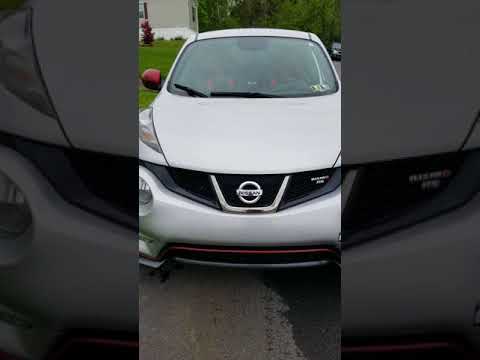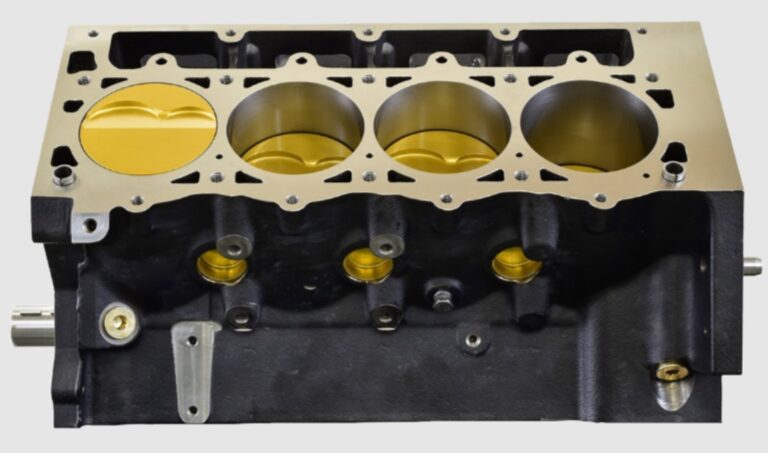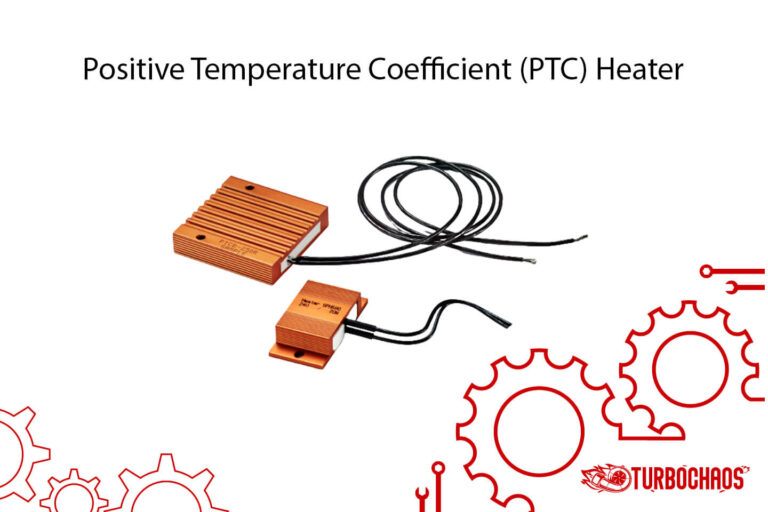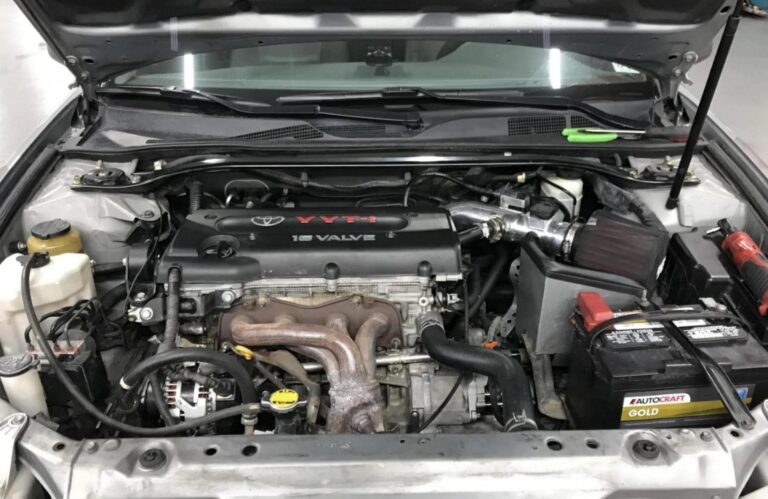How To Check Engine Code With Push Button Start? 5 Easy Steps
Are you looking for How To Check Engine Code With Push Button Start? In the modern era of automotive technology, many vehicles come equipped with a push-button start feature. This advancement has changed the way we interact with our cars, including how we diagnose issues.
When the dreaded check engine light appears, it’s crucial to understand how to retrieve the diagnostic trouble codes (DTCs) using this system. Mastering this skill not only empowers you to understand your vehicle better but also helps in making informed decisions regarding car maintenance and repairs.
Key Takeaways
- Understanding the Basics: Learn the fundamental steps to check engine codes in vehicles with a push-button start.
- Tools Required: Discover the essential tools needed for this process.
- Step-by-Step Guide: Follow a detailed procedure to successfully retrieve engine codes.
- Interpreting Codes: Gain insights into what these codes mean and how to act on them.
- Common Issues and Solutions: Identify frequent problems and their respective solutions.
- Professional Assistance: Know when to seek help from a professional mechanic.
How To Check Engine Code With Push Button Start?
To check the engine code with a push-button start, follow these steps:
- Ensure the Car is in a Safe Place: Park your vehicle and ensure it’s safely positioned.
- Locate the OBD-II Port: Find the OBD-II port in your vehicle, usually located under the dashboard on the driver’s side.
- Connect an OBD-II Scanner: Plug the scanner into the port.
- Power Up the Vehicle’s Electrical System: Press the push-button start without engaging the engine. This activates the car’s electrical system.
- Read the Codes: Follow the scanner’s instructions to read the engine codes displayed. These codes identify specific issues your car’s computer has detected.
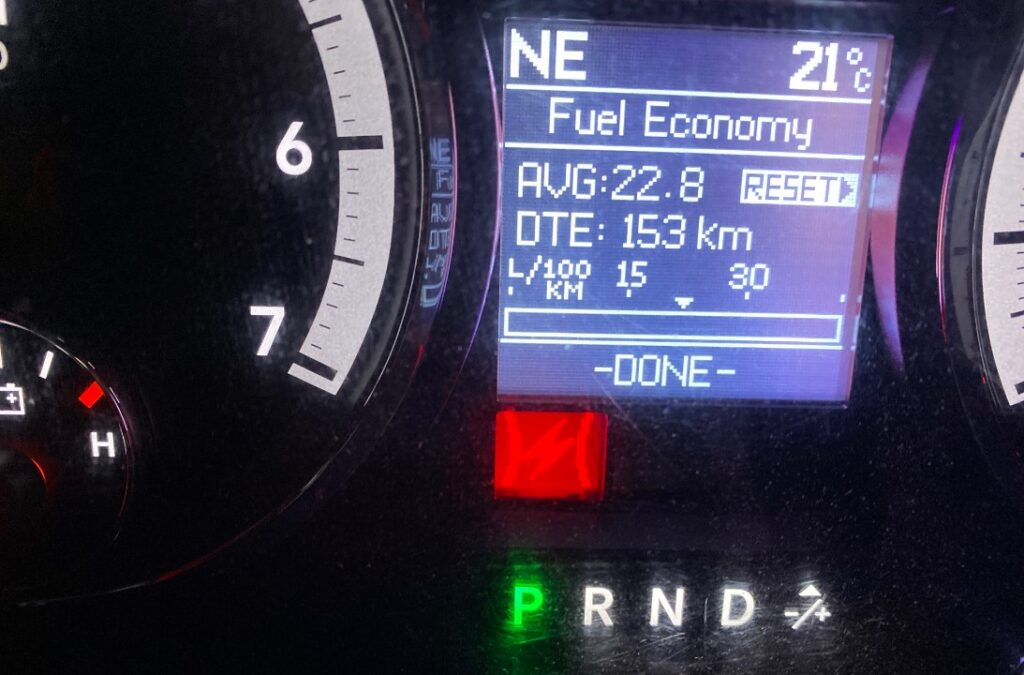
Understanding the Basics of Engine Diagnostics with Push Button Start
Retrieving engine codes from a vehicle with a push-button start might seem daunting at first. However, it’s a straightforward process once you understand the basics. This method involves a series of steps that allow the car’s onboard computer to communicate any issues it has detected.
Tools Required for Checking Engine Codes
Essential Tools:
- OBD-II Scanner: A device that plugs into your car’s onboard diagnostics port.
- Car Manual: Your vehicle’s manual provides specific information related to the diagnostics system.
Step-by-Step Guide to Retrieve Engine Codes
- Prepare Your Vehicle: Ensure your car is in a safe location and is turned off.
- Connect the OBD-II Scanner: Locate the diagnostics port and plug in the scanner.
- Activate the Ignition: Press the push-button start without starting the engine.
- Scan for Codes: Follow the scanner’s instructions to retrieve the engine codes.
Interpreting Diagnostic Trouble Codes (DTCs)
Once you have retrieved the codes, the next step is to understand what they signify. Each code corresponds to a specific issue within your vehicle. For instance, a code starting with ‘P’ typically indicates a problem with the engine or emissions system.
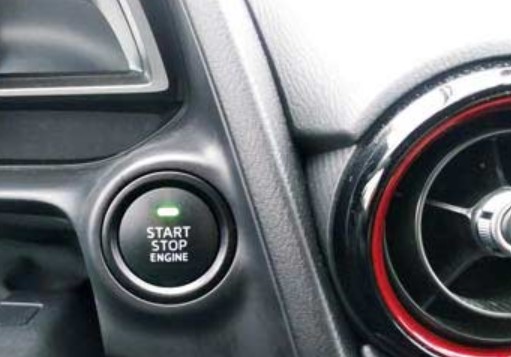
Common Issues Detected and Solutions
- P0300 – Random/Multiple Cylinder Misfire Detected: This could indicate issues with spark plugs, ignition coils, or fuel delivery.
- P0171 – System Too Lean (Bank 1): Often related to vacuum leaks, faulty fuel injectors, or oxygen sensors.
When to Seek Professional Help?
While retrieving and interpreting engine codes is useful, some issues require a professional mechanic’s expertise. If the problem seems complex or beyond your skills, do not hesitate to seek professional assistance.
Advanced Tips for Effective Diagnosis
Going beyond the basics, there are advanced techniques that can enhance your ability to effectively diagnose engine issues in vehicles with a push-button start. These methods not only simplify the process but also provide a deeper understanding of the underlying problems.
Utilizing Advanced Diagnostic Tools
Modern OBD-II scanners offer a range of functionalities beyond just reading codes. They can provide real-time data, freeze frame information, and even suggest potential fixes. Investing in an advanced scanner can be a game-changer, giving you a more comprehensive view of your vehicle’s health.
Understanding Manufacturer-Specific Codes
In addition to generic OBD-II codes, manufacturers often have specific codes unique to their vehicles. These codes can offer more detailed information about the problem. Refer to your vehicle’s manual or consult online databases to decode these manufacturer-specific codes for a more accurate diagnosis.
Precautions and Safety Measures
Safety is paramount when diagnosing engine issues, especially with the complexity of push-button start systems. Being cautious can prevent accidents and avoid further damage to your vehicle.
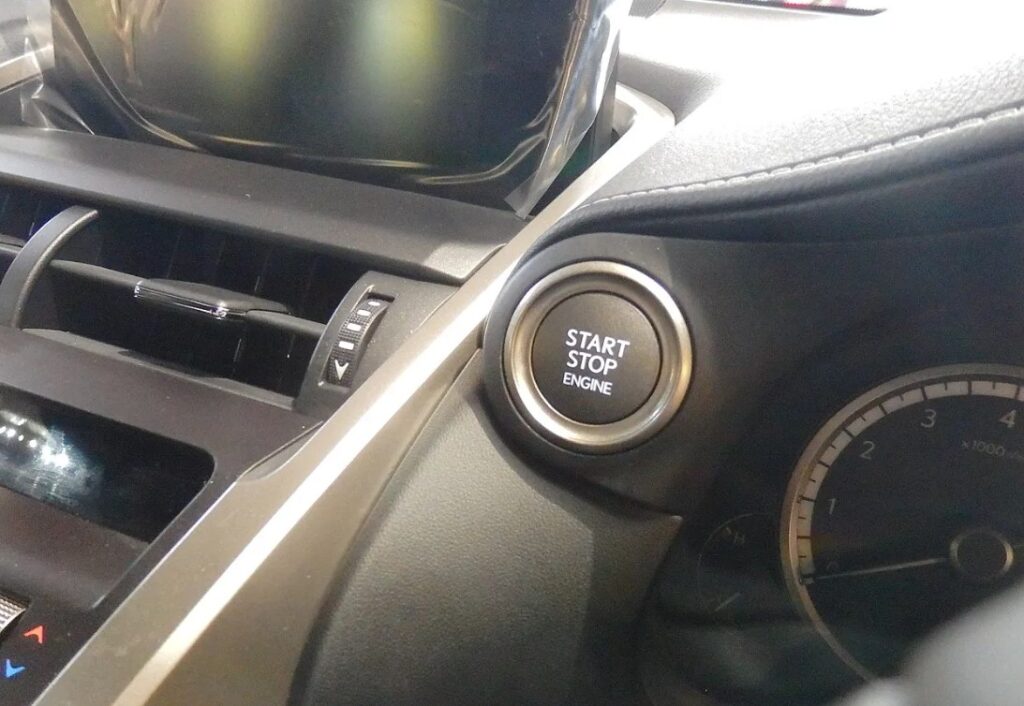
Ensuring Proper Electrical Safety
When working with electronic systems like OBD-II scanners and push-button ignitions, it’s crucial to follow electrical safety guidelines. Always turn off the vehicle completely before connecting or disconnecting any diagnostic tools. Avoid contact with any exposed wires or terminals.
Avoiding Common Diagnostic Errors
Misinterpretation of codes or incorrect use of diagnostic tools can lead to wrong conclusions and actions. Always double-check the codes and their meanings. If uncertain, consult a professional to avoid making costly mistakes.
Routine Maintenance and Engine Health
Regular maintenance is key to preventing engine issues and ensuring your vehicle runs smoothly. Understanding how to maintain your vehicle can reduce the frequency of check engine lights and related problems.
Importance of Regular Service Checks
Adhering to a regular service schedule can prevent many engine issues. Regular checks include oil changes, filter replacements, and inspections of critical components like spark plugs and ignition coils. These measures can keep your vehicle in top condition and reduce the likelihood of unexpected engine troubles.
Recognizing Warning Signs Early
Apart from relying on diagnostic codes, being attentive to your vehicle’s performance can help catch issues early. Unusual noises reduced fuel efficiency, and changes in engine performance are early indicators of potential problems. Addressing these signs promptly can prevent more severe issues.
How To Read/Delete Check Engine On Push Button Car?
Reading and deleting the check engine light in a push-button car involves a few steps that are relatively straightforward. The process typically requires an OBD-II scanner, which is a universal tool used across most modern vehicles.
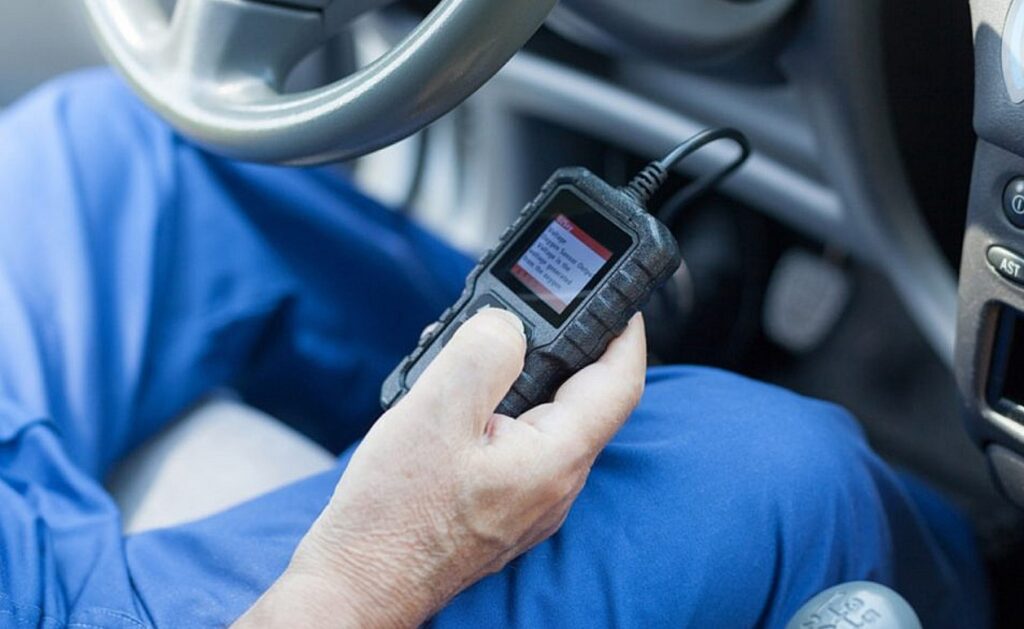
Reading the Check Engine Light
- Ensure Safety: Park your vehicle in a safe location and turn it off.
- Connect the OBD-II Scanner: Locate the OBD-II port in your car (usually under the dashboard on the driver’s side) and connect the scanner.
- Turn on the Ignition: Press the push button to start without starting the engine to power up the car’s electrical systems.
- Read the Codes: Follow the scanner’s instructions to read the engine codes. These codes will help identify what issue triggered the check engine light.
Deleting the Check Engine Light
- Resolve the Issue: Before attempting to delete the check engine light, ensure that the issue indicated by the code is resolved.
- Use the Scanner: With the issue fixed, connect the OBD-II scanner again and use its function to clear or reset the check engine light.
- Recheck: Start the engine to ensure that the light does not reappear, indicating that the issue has been successfully addressed.
How Do I Get My Engine Code Without A Scanner?
Retrieving engine codes without a scanner in modern vehicles, especially those with a push-button start, is usually not possible. Most newer models require an OBD-II scanner for accurate diagnostics. However, older vehicles might have alternative methods:
For Older Vehicle Models
- Key Cycling Method: This involves turning the ignition key on and off in a specific pattern, prompting the check engine light to flash in a sequence representing the trouble codes.
- Dashboard Diagnostics: Some cars have built-in diagnostic systems accessible through specific button combinations on the dashboard, displaying codes on the instrument cluster.
Alternative Methods
- Dashboard Warning Lights: Pay attention to other dashboard lights and messages, which can sometimes provide clues about the engine’s status.
- Physical Inspection: Regular inspection of common problem areas like the engine oil, coolant levels, and air filter can sometimes help identify issues without a code.
How Do You Pull Up Check Engine Codes?
Pulling up check engine codes is a key step in vehicle diagnostics, particularly when troubleshooting issues. The process typically involves the use of an OBD-II (On-Board Diagnostics II) scanner. This tool is universally compatible with most cars manufactured after 1996, including those with push-button start systems.
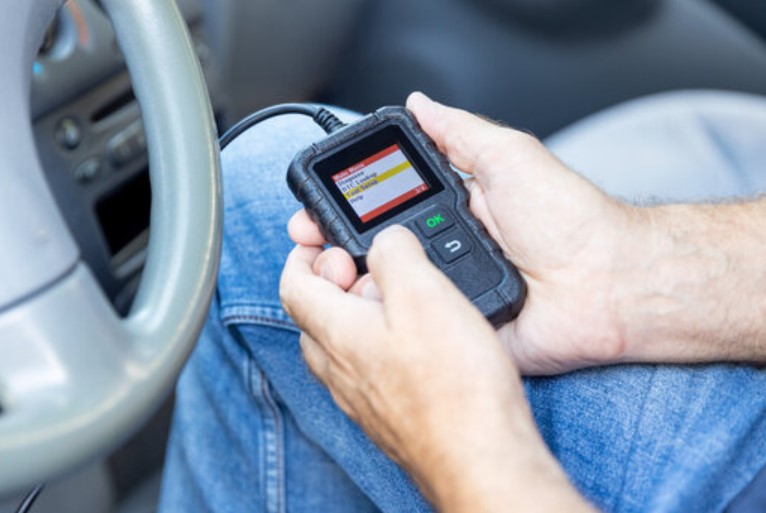
Steps to Pull Up Check Engine Codes
- Connect the Scanner: Locate the OBD-II port, usually found under the dashboard on the driver’s side, and connect the OBD-II scanner.
- Turn On the Ignition: Without starting the engine, activate the car’s electronics by pressing the push-button start.
- Read the Codes: The scanner will interface with the vehicle’s computer system and retrieve any stored codes. These codes appear as alphanumeric strings, each indicating a specific issue.
How Do I Find My Engine Code?
Finding your engine code, often referred to as a VIN (Vehicle Identification Number) engine code, is essential for identifying specific information about your vehicle’s engine type. This code is crucial for ordering parts and understanding vehicle specifications.
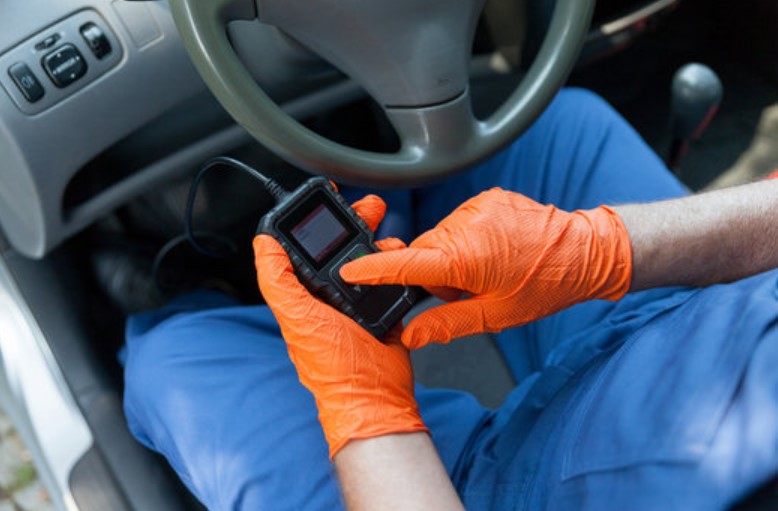
Locating the Engine Code
- VIN: The easiest way to find your engine code is through the VIN, which is often located on the dashboard near the windshield or on the driver’s side door post.
- Engine Bay: Some vehicles also have the engine code stamped or labeled in the engine bay, either on the engine itself or on a nearby tag.
- Vehicle Manual: Your vehicle’s manual or documentation might list the engine code along with other specifications.
Can You Use A Code Reader On A Car That Won’t Start?
Using a code reader on a car that won’t start is possible and can be particularly useful in diagnosing the cause of the starting problem. The vehicle’s electrical system, which powers the OBD-II port, usually operates independently of the engine’s running condition.
Considerations When Using a Code Reader on a Non-Starting Car
- Battery Check: Ensure the car battery has enough charge to power the electronics. A dead battery might prevent the code reader from functioning.
- Scanner Connection: Connect the code reader to the OBD-II port. The car’s electrical system should be able to power the port even if the engine doesn’t start.
- Diagnostic Codes: The code reader can retrieve diagnostic codes that may indicate why the car won’t start, such as issues with the fuel system, ignition, or engine sensors.
Conclusion
Understanding how to check engine codes with a push-button start is a valuable skill for any car owner. It offers insights into the health of your vehicle and guides you in taking appropriate action.
Remember, while you can diagnose many issues yourself, always consider professional help for complex problems. This approach ensures your car remains in optimal condition, safeguarding your driving experience.
Top FAQ’s
Can I check engine codes without an OBD-II scanner?
Generally, it’s challenging to check engine codes without an OBD-II scanner, especially in modern vehicles with push-button starts. Some older models might display codes through a series of dashboard light flashes, but this method is largely outdated and not applicable to most current models.
What does a blinking check engine light mean compared to a steady one?
A steady check engine light typically indicates a minor issue, whereas a blinking light suggests a more severe problem, often related to the engine’s misfiring. It’s advisable to address a blinking check engine light immediately to avoid potential damage to your vehicle.
How can I reset the check engine light after fixing the issue?
After resolving the issue, you can reset the check engine light by using an OBD-II scanner or, in some cases, by disconnecting the car battery for a short period. However, if the underlying issue isn’t fixed, the light will likely return.
Can low fuel or a loose gas cap trigger the check engine light?
Yes, a loose gas cap can trigger the check engine light as it causes fuel vapors to leak, affecting the vehicle’s emissions system. Similarly, extremely low fuel levels might also trigger warnings, though it’s less common.
Is it safe to drive with the check engine light on?
It can be safe to drive for a short distance with the check engine light on if it’s steady and the car seems to be running normally. However, it’s not advisable to ignore the light for an extended period. A blinking light indicates a more serious issue, and you should stop driving the vehicle.

Matt Rex brings 12 years of specialized automotive expertise, holding a professional degree in Automotive Engineering Technology. As the founder of Turbochaos, he delivers comprehensive diagnostic services, performance optimization, and fleet maintenance solutions, backed by advanced certifications in hybrid/electric systems and ADAS technology. Its innovative methodologies have earned industry recognition while maintaining a 98% customer satisfaction rate.

